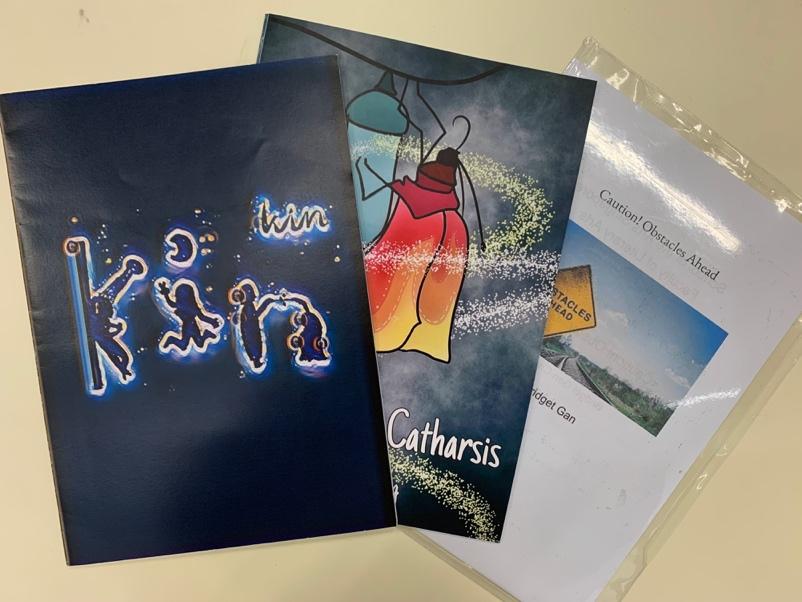Through LA, I’ve experimented with a variety of different writing forms, creating works that I both like and dislike. Looking at those I’m proud of, I realise that those are not only the ones that I’ve put the most effort into but are also those that helped me to grow as a writer.

Portfolios by me and my friend, Bridget
For example, one work I’m proud of is my portfolio, a compilation of my written pieces from over the years, along with a process reflection. To create the portfolio, I had to design cover pages and reflect on what I learnt. Through this, I was able to see how much I’ve grown. I always find my portfolios a joy to look at as they have been printed into a book, where there are not only words but colourful cover pages that I’ve designed.
Another work I’m proud of is my short story. It is about a girl, Tara, who is trying to overcome her grief, the loss of her father, with the help of her friend Lux. This actually resembles a friendship I know of, making it something even more personal to me. By observing that friendship, I was able to further expand on my story. It still amazes me how inspiration can be taken from anywhere. This story was initially something I drew out and I never thought that I would write it out. Writing it out showed me how much I could develop on the characters and the plot.